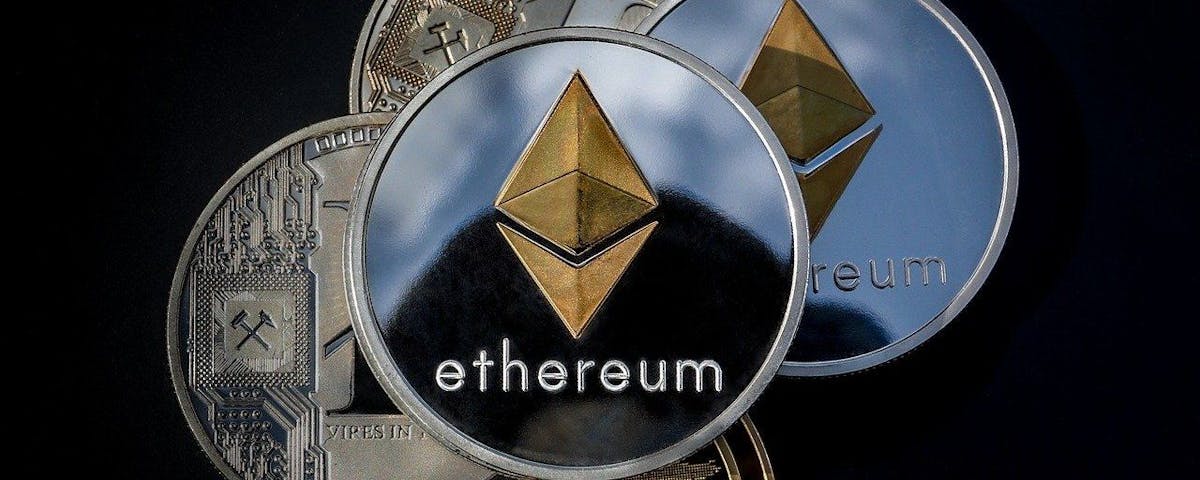Discover the potential of Web 3.0 Cryptos, the latest generation of cryptocurrencies that leverage blockchain technology and smart contracts. These innovative digital assets aim to realize the decentralized vision of Web 3.0 by enabling secure and efficient transactions without intermediaries while giving users full control over their data.
As the worldwide crypto market capitalization surpassed $3 million in 2021, the competition among cryptocurrencies has intensified, and it’s expected to continue in 2023. With the rise of Web 3.0, the newest buzzword in the crypto sphere, the industry is set to expand even further.
Unlike its predecessors, Web 3.0 focuses on decentralization and user empowerment. But what exactly is Web 3.0, and which Web 3.0 crypto coins are worth investing in? Our article provides you with a curated list of the best and safest Web 3.0 cryptocurrencies to keep an eye on and buy as a long-term investment. With over 1000 Web 3.0 cryptos available, making informed investment decisions can be challenging. Let’s get started!
What Is Web 3.0?
Web 3.0 is the latest term used to describe the Internet’s next significant evolution, aiming to address issues related to the ownership and security of user data. In the early days of the internet, Web 1.0 (1990-2004) was characterized by static websites controlled by large corporations, while the Web 2.0 era (2004-2020) became synonymous with user-generated content on social media platforms.
However, this led to the centralization of data by tech giants like Microsoft, Google, and Facebook, which caused privacy and security concerns. The emergence of Web 3.0 is set to change this, with a focus on decentralization and peer-to-peer transactions that give users control over their data.
Web 3.0 aims to leverage blockchain technology to enhance data openness and content accessibility, with the potential to revolutionize other sectors through artificial intelligence (AI), machine learning (ML), and the metaverse.
The adoption of Web 3.0 could eliminate the need for centralized authorities that store user data, putting control back in the hands of users rather than corporations. Our article explores the significance of Web 3.0 and the potential benefits of this next-generation internet evolution.
Web 2.0 Vs. Web 3.0
In the world of technology, Web 2.0 and Web 3.0 may seem similar, but they approach challenges differently. While Web 2.0 is primarily used for reading and writing content, Web 3.0 is a semantic web used for creating content. This difference allows for smoother information interchange and enhanced cybersecurity in Web 3.0.
One major difference between the two is currency. In Web 2.0, transactions are usually paid for with fiat currency. In contrast, Web 3.0 transactions are facilitated using cryptocurrencies, encrypted digital currencies used to fund transactions.
Another key difference is content ownership. Web 2.0 networks control information storage, raising concerns about data access, anonymity, and security. However, Web 3.0 allows for direct and simultaneous data exchange between users, ensuring greater security and control over personal data.
Web 2.0 focuses on interactive and collaborative internet technologies, such as social media, blogging, and video sharing. In contrast, Web 3.0 introduces concepts like AI-powered DApps, 3D portals, and virtual worlds like the metaverse.
Lastly, Web 3.0 offers increased data security and privacy. Users’ data is anonymized, and their digital identity is not linked to their real identity, unlike in Web 2.0 where companies can track or trace users’ data. This is because all data is stored in the blockchain.
What Is Web 3.0 Cryptos?
Web 3.0 cryptos, also known as decentralized digital currencies, utilize smart contracts to secure blockchain projects or enable their native blockchains to function. A prominent example is Ether (ETH), the official currency of the Ethereum blockchain, which is used to pay for transactions like game purchases and fees.
While it’s possible to complete these transactions using Web 2.0, Web 3.0 coins provide greater privacy, allowing users to carry out their transactions without the oversight of a third party. Additionally, Web 3.0 puts users in control of their data, meaning those who use Web 3.0 coins effectively own a piece of the internet.
What Sets Web 3.0 Crypto Apart From Other Cryptos?
During the dominance of tech giants such as Facebook and Google, Web 3.0 emerged to challenge their practices of monetizing users’ data. With Web 3.0, users have the right to own their data and benefit from it by selling it to advertisers while retaining data privacy.
Unlike Web 2.0, where users need separate accounts for different social media platforms and online shopping, Web 3.0 offers a decentralized version of the internet where users only need one account to access various services.
Web 3.0 isn’t a specific cryptocurrency or blockchain but a decentralized internet that requires Web 3.0 crypto coins to access its services. These coins operate on public blockchains with trustlessness, decentralization, equal access, and open-source technology.
With Web 3.0 crypto coins, users can access various services, including data storage, network infrastructure, social media, NFTs, and blockchain gaming. Despite the current turbulence in the crypto sphere, numerous Web 3.0 projects are coming up, making it crucial to learn about the best Web 3.0 crypto coins to watch for.
Our guide covers the top Web 3.0 crypto coins based on their utility, continuing traction, and network effect. This information will help you decide whether to invest in them and benefit from the growing Web 3.0 ecosystem.
1. Helium (HNT)
Helium is a blockchain network that operates in a decentralized manner and is fueled by the Internet of Things (IoT) and devices using the proof-of-coverage algorithm.
By leveraging Helium, users can establish a wireless infrastructure that is decentralized and allows low-power devices to communicate and transmit data using a network of nodes called hotspots, which cover a specific percentage of the network. Acting as miners, these hotspots enable users to both operate nodes and mine HNT, the blockchain’s native cryptocurrency.
2. Ethereum (ETH)
Ethereum, as the original smart-contract blockchain, has continued to be a top player in the market. It is an open-source blockchain that supports numerous DApps and DeFi networks, making it a popular Web 3.0 crypto coin.
Recently, Ethereum underwent an upgrade known as The Merge, which involved a switch from the proof-of-work to the proof-of-stake consensus mechanism. This change further solidified Ethereum’s position as a blockchain of choice for many users.
Additionally, Ethereum is home to several leading NFT marketplaces like OpenSea. OpenSea features the popular Bored Ape Yacht Club collection (BAYC) of NFT tokens, making Ethereum an attractive investment for NFT enthusiasts.
3. Dash 2 Trade (D2T)
The Dash 2 Trade (D2T) is a relatively new Web 3.0 cryptocurrency that surpassed expectations by raising over $400,000 during its presale release, followed by an additional $6 million from 70,000 investors. This rapid success highlights its potential as a top Web 3.0 investment opportunity.
D2T is set to become a leading tool for informed crypto investors, offering features like analytics for on-chain trends, built-in back-testing capabilities, a strategy builder, and alerts for crypto exchange listings. These features make D2T an attractive choice for investors interested in Web 3.0 cryptocurrency investments.
4. Chainlink
Chainlink is a decentralized network that runs on the Ethereum blockchain and is recognized for pioneering smart contracts based on real-world data. Its primary function is to provide oracle services to other blockchains.
LINK is the native token of Chainlink and has experienced a massive 4,190% price surge since its launch in 2017. Being among the first smart contract networks, Chainlink offers seamless integration with other blockchains, making it a top choice for developers and investors in the Web 3.0 space.
5. Filecoin
Filecoin is a decentralized storage network that enables users to earn FIL, the platform’s native cryptocurrency, by renting their unused computer storage space to others. One of the key advantages of using Filecoin is the ability to securely store digital assets, including NFTs, on the network.
Any user or data center can become a storage provider as long as they have adequate disk space and internet access. The amount of FIL tokens and transaction fees a user can earn is based on the amount of storage space they provide.
6. Theta Token
Theta Token is a blockchain-based platform created specifically for decentralized peer-to-peer video streaming.
Its objective is to make the distribution of video content between users simpler and more efficient by utilizing enterprise validator nodes from major corporations like Google, Samsung, and Sony. The platform has its own cryptocurrency known as Theta coin.
7. Polkadot
Polkadot is a blockchain platform that enables the seamless transfer of assets and data across multiple blockchains, offering a range of services beyond token transfers. With the use of parachains within the Polkadot network, users can easily operate across several blockchains.
One of Polkadot’s key distinguishing features is the ability of its independent and unique parachains to communicate with each other, which aligns with the principles of Web 3.0. The platform’s native cryptocurrency is known as DOT.
8. Solana
Numerous discussions are underway regarding Solana, which uses the $SOL token, and whether it will serve as the foundational layer for Web 3.0. Dubbed the “Ethereum killer” or an Ethereum alternative, Solana is popular among blockchain users due to its high scalability and low transaction levels.
Moreover, many NFT communities are opting for Solana over Ethereum for their initiatives, such as Infinity Labs, Cets on Creck, Okay Beas, and Degenerate Ape Academy.
9. Siacoin
Siacoin is a cloud storage platform and marketplace that uses decentralized technology to store and share data. Before uploading, files are encrypted and distributed across the network to ensure secure and private access.
What sets Siacoin apart is its affordability, with storage costs up to 90% lower than traditional cloud providers. Additionally, Siacoin has introduced an open-source API that allows developers worldwide to create their applications on the platform. Developers can monetize their work by charging users $SC to unlock their projects.
10. Basic Attention Token (BAT)
The Brave Browser’s Basic Attention Token (BAT) facilitates a blockchain-based digital advertising program. Advertisers can target their ads to users while BAT ensures user privacy protection.
As a reward for viewing ads, users receive a portion of the funds from advertisers who pay for their advertisements using BAT tokens.
Conclusion
The Web 3.0 crypto coin market is constantly evolving, making it difficult to predict what the future digital landscape will look like. With so many projects and platforms to choose from, conducting thorough research before investing in coins is crucial.
While there is no clear winner in the race for the top Web 3.0 crypto coin, it’s important to examine the use cases of different projects to determine their potential value in the digital world. This guide is a valuable resource for identifying Web 3.0 projects worth following.
Additionally, you may want to explore the world of Masternode Cryptocurrencies.

